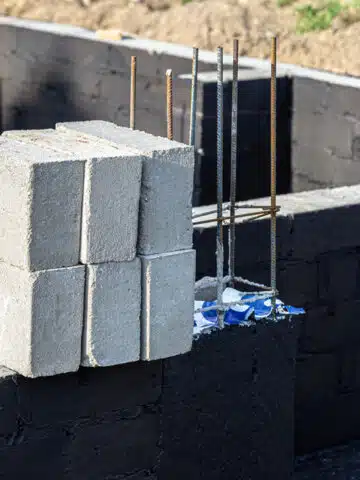Blog
Watch Out For These 6 Signs Of Foundation Wall Water Damage
The foundation of a building stands as its backbone, providing support, stability, and overall resilience. Detecting early signs of foundation wall water damage can make all the difference in safeguarding this integral part of the structure. By understanding these indicators and acting swiftly, homeowners and businesses can save on costly repairs and ensure the longevity of their investments. Given the importance of this aspect, many turn to commercial construction services for specialized guidance and effective solutions.
Cracking and Fracturing
Cracks that manifest on foundation walls serve as early warning signs of potential damage. They often start out minute and barely noticeable but can quickly evolve into more visible and alarming fractures if water damage is at play. One crucial distinction to make is between settling cracks, which are natural and often harmless, and those caused by water pressure.
While smaller, hairline cracks might simply be a result of the building settling over time, larger and growing cracks can point to water damage. Horizontal cracks are especially worrisome. They usually indicate hydrostatic pressure — a phenomenon where water accumulates outside a foundation wall, exerting force against it. As this water continues to push against the foundation, the cracks may widen, signaling an escalation in the damage.
It’s also essential to monitor the patterns in which these foundation cracks develop. An erratic, weblike pattern, for instance, could suggest inconsistent water pressure at different parts of the foundation. Addressing these cracks early on, ideally with the help of experts, can prevent further deterioration of the foundations overall strength, ensuring the building remains safe and intact.
Efflorescence and White Stains
Efflorescence, characterized by a distinct white, powdery substance, is more than just a superficial issue on foundation walls. It’s a symptom of an underlying problem — water infiltration. When water seeps into the foundation, it dissolves soluble salts present within the construction materials. As this water makes its way to the surface and evaporates, these salts are left behind, creating the whitish residue known as efflorescence.
The appearance of efflorescence should alert property owners to the fact that water is penetrating their foundation, which could lead to more extensive damage over time. Additionally, while the powdery substance itself does not cause harm, its constant presence suggests that the foundation is continually exposed to moisture. This persistent moisture can weaken the foundation, making it more susceptible to larger cracks and other forms of damage.
Moreover, it’s not just the efflorescence that’s concerning. The stains and discolorations accompanying it indicate that the wall material is consistently damp, further emphasizing the importance of addressing the root cause. By understanding efflorescence and its implications, property owners can take the necessary steps to counteract the moisture intrusion and safeguard their foundation walls.
Damp Spots and Discoloration
Dark or damp spots on foundation walls typically indicate an area where water has seeped in. Even if these spots dry up temporarily, their recurrence, especially after a rainstorm, is a telltale sign of persistent water intrusion issues. This kind of water damage, if neglected, can lead to mold growth, which brings a host of additional problems, from health risks to further structural harm.
Buckling or Warping Walls
Over time, continuous water pressure against foundation walls can cause them to bow or buckle inward. This warping is not just a sign of current water damage but also points towards potential future structural failures. Walls that exhibit these signs require immediate attention, and property owners are often advised to seek commercial construction services for specialized intervention.
Mold and Musty Odors
Mold thrives in damp environments. Thus, its presence on foundation walls or the accompanying musty odor is a significant indication of water damage. Besides the immediate structural concerns, mold can also pose severe health risks, including respiratory problems, allergies, and more. Timely detection and elimination of mold are essential to protect both the building and its inhabitants.
Groundwater Swells and Pooling
While this might not be directly on the foundation wall, the pooling of water near the base of a building can be a precursor to foundation wall water damage. Groundwater swells, especially after heavy rains, suggest that the property lacks effective drainage solutions. Over time, this standing water can find its way into even the smallest foundation cracks, exacerbating water damage concerns.
Recognizing these signs of foundation wall water damage is the first step towards ensuring a building’s longevity and safety. While some minor issues might be addressable through DIY methods, more significant concerns often require the expertise that commercial construction services bring. By proactively monitoring for these signs and seeking professional assistance when necessary, property owners can maintain the structural integrity of their foundations and stave off the more severe repercussions of unchecked water damage.





